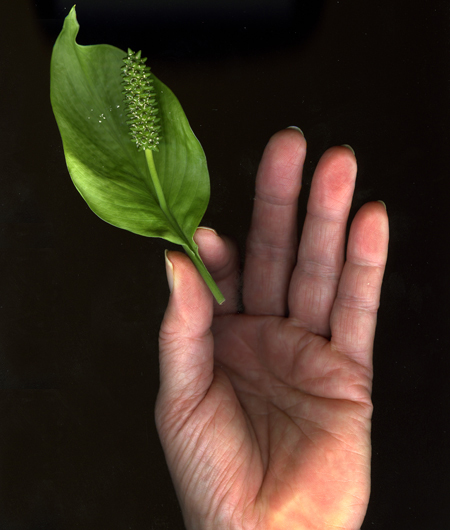hand with peace lily

The last of the group of the hand-with-objects images originally created for qarrtsiluni’s worship issue.
The others in the series:
the artist’s hand with ammonite
the artist’s hand with kelp
the artist’s hand with stones
the artist’s hand with physalis
Related images (not for qarrtsiluni):
the artist’s hand with pen
the artist’s hand with heart
Added March 10th: While looking for something else in my archives, I found these photos of peace lily flowers in early to late stages of life.
March 6, 2012 in Human, Nature, Photoworks by Marja-Leena
Marja-Leena!
Never heard of the word, or the literary magazine (or music? plays?)! Something can be ordered as a podcast? Somebody wrote about a snake, that was killed? Then there is an issue of worship?
We do have a synonyme-dictionary somewhere in this household, but it has ran away. I am constantly amazed of how even the huge big objects disappear from the supposed place. Quarrtsiluni could be an Indian name.
I did Google the name, but only come up with this publication. Or is it maybe a group?
Anyway, the plant that is in your hand is called vehka. I don’t know what it is in English. Is is blooming now? Then you have a full size Spring over there!
peace lily! i didn’t know that. interesting series. x
Ripsa! Qarrtsiluni is a wonderful online magazine that has been active for several years. Check the ‘about’ page, where for example it says: ‘The title comes from an Iñupiaq word that means “sitting together in the darkness, waiting for something to burst.”’
Yes, many of the posts are available as podcasts, especially the poetry. I’ve submitted and had published several images over the years for different themes, which change every few months when they send out a call for submissions, often using guest editors. This series to which I submitted was for the theme of worship, which can be very loosely interpreted, as I have done.
The flower here is a peace lily, a houseplant here. Thanks for the Finnish name which I did not know. The flower is usually white but turns green when it goes to seed and is about to whither and turn brown.
Elisa, I didn’t know the name either until just a few years ago, from Erika I think. Yes, it is an interesting series for me. The worship theme had me puzzling, and this idea came to me after I’d done the scan ‘artist’s hand with a pen’ earlier. You know how I love scanning.
Ah, you are so talented. That photo is perfect.
Hattie, thank you, you are so kind!
A very nice take on the suggestion of form and spirit. It’s occurred to me that humans on an alien planet, no matter how beautiful, simply wouldn’t belong to its life cycle. Here, everything natural fits.
Susan, thanks. Interesting thoughts on possible humans on an alien
planet…
Marja-Leena!
I think we’ve talked about this flower before. Vehka can be cultivated, in which case it has in it a really big one white flower, very strange, it’s like a piece of white thin paper which is folded half way over itself.
The cultivated form is called kalla, and it’s used as a funeral flower.
I have to check the magazine! Nice that it exists. My husband has a small book which has most of the West coast Indian tribes, but that one wasn’t there. Are there some of the Indians left yet?
I do know that most of the tribes that used to live in the Cascades are simply gone.
Ripsa, I’m glad you like qarrtsiluni.
As I understand from wikipedia, the peace lily is not”>http://en.wikipedia.org/wiki/Spathiphyllum”>not a true lily and there are many kinds. Calla”>http://en.wikipedia.org/wiki/Calla”>Calla is of the same family but a different genus and does grow outdoors. Yes, the white one is popular for funerals, and there are many coloured ones in some gardens here.
The Iñupiaq”>http://library.thinkquest.org/22550/inupiaq.html”>Iñupiaq are Inuit (Eskimos). As for Indians, or First Nations as we call them, there are many all over our province, even in our city.
Hope the links will give you more information, Ripsa! Perhaps you can find Finnish ones.
Another lovely photo+concept. The titles of the series read as their own poem.
Naomi, what a lovely observation re a poem, thank you.